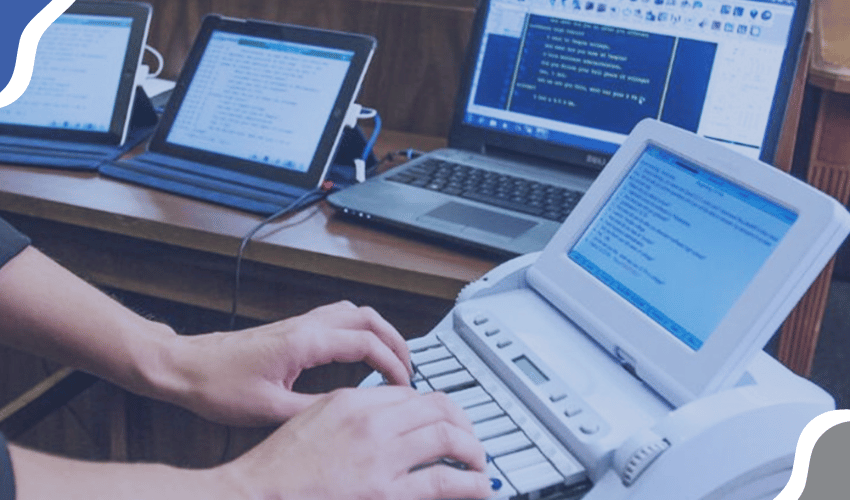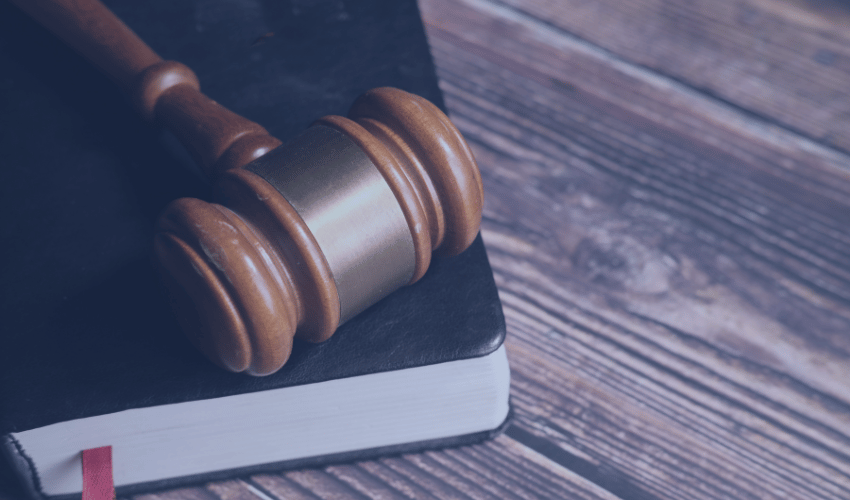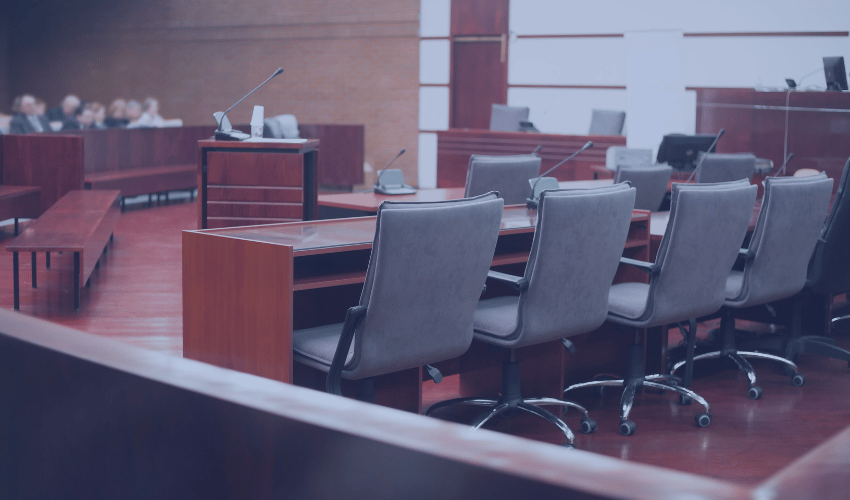The Critical Role of Stenography in Court Accuracy and Transparency
Imagine a courtroom drama unfolding. Lawyers are presenting their arguments. Witnesses are taking the stand, their testimony holds the weight of justice. The judge presides over the proceedings, ensuring fairness and adherence to the law. In this whirlwind of emotions, facts, and legal jargon, one often-unnoticed figure plays a crucial role: the court reporter. Using a unique and specialized form of shorthand called stenography, these highly skilled professionals capture every word spoken during court proceedings. This meticulous skillset ensures accuracy, transparency, and, ultimately, the fair administration of justice.
The Importance of an Accurate Transcript in the Judicial System
A robust and reliable justice system depends on an accurate transcript. These transcripts provide a complete and unbiased account of court proceedings, capturing every word spoken, every ruling made, and every piece of evidence presented. This detailed documentation is the foundation of justice, ensuring fairness, transparency, and accountability.
Accurate transcripts play a crucial role in upholding the rights of all parties involved in a legal case. They enable the verification of testimony, the review of evidence, and the assurance that all parties follow legal procedures correctly. Without accurate transcripts, the judicial system would struggle to operate effectively, potentially leading to miscarriages of justice and undermining public trust. For example, imagine a witness later clarifies their testimony or an attorney needs to recall a specific statement made during a trial. Accurate court transcripts make it possible to revisit these details, ensuring that decisions are made based on a comprehensive and reliable record of the proceedings.
The importance of accurate transcripts extends far beyond the immediate needs of a single case. These transcripts serve as valuable historical documents, providing insights into legal precedents, societal values, and the evolution of the judicial process itself. Researchers, legal scholars, and future generations benefit from having access to these carefully maintained transcripts, which provide a window into the workings of the justice system throughout history.
Understanding Stenography
Definition and Historical Context
Stenography is the process of using shorthand symbols to transcribe spoken language into written form. It is crucial in preserving the accuracy, fairness and transparency of legal proceedings. A stenographer is a skilled wordsmith who captures every spoken word during legal proceedings. They then convert those words into a written transcript that becomes part of the official court record.
The practice of stenography dates back centuries. Ancient civilizations, including the Greeks and Romans, employed shorthand systems to record significant events and legal proceedings. However, modern stenography emerged in the early 20th century with the invention of the stenotype machine. The stenotype machine uses a specialized keyboard that allows stenographers to type at incredibly high speeds, capturing the nuances of spoken language.
Modern Stenography Techniques
Today, stenographers utilize various techniques and technologies to fulfill their crucial role in the courtroom, deposition conference room and elsewhere. Although the traditional stenotype machine remains, it has been updated with new technology. The use of computer-aided transcription (CAT) software assists stenographers in producing accurate and timely transcripts, often in real-time.
In addition to their technical skills, stenographers deeply understand legal terminology and courtroom procedures. This knowledge enables them to interpret and transcribe complex legal arguments and witness testimony accurately. As the legal profession continues to evolve, stenographers adapt to new technologies and maintain their vital role in upholding the integrity of court proceedings. Currently, the United States has an estimated 27,000 stenographic court reporters.
Importance of Stenography in Court
Stenography in court proceedings ensures the integrity and reliability of legal transcripts, directly impacting the justice system's fairness and transparency. Let's delve deeper into the profound implications of stenography in court proceedings.
Ensuring Accurate Records
With their specialized skills in stenography, court reporters create a precise and comprehensive account of everything spoken during legal proceedings. This includes testimony, arguments, rulings, and objections. The accuracy of these transcripts is paramount for the fair administration of justice.
These records serve as the official documentation of the proceedings, forming the basis for appeals, future litigation, and legal research. Judges, attorneys, and other legal professionals rely heavily on these transcripts to review past proceedings and make informed decisions.
Maintaining Verbatim Records
Stenography ensures that court records are not merely summaries or interpretations but verbatim accounts of what transpired. This level of detail is crucial because even slight variations in language can significantly impact the interpretation of events and the application of the law.
A verbatim record captures every spoken word, including hesitations, repetitions, and inflections. This complete and unaltered account helps eliminate ambiguity and preserve the nuances of witness testimony and legal arguments.
Enhancing Legal Proceedings
The presence of stenographers and the availability of accurate transcripts greatly enhance the efficiency and effectiveness of legal proceedings. Attorneys can focus on their arguments and questioning of witnesses, confident that a stenographer is recording every word.
Accurate transcripts also facilitate post-trial motions, appeals, and other legal processes. They provide a reliable basis for legal arguments, reducing disputes over the original proceedings and enabling courts to make informed decisions based on a complete and accurate record.
Impact on Legal Outcomes
Perhaps the most significant impact of stenography lies in its ability to influence legal outcomes directly. The accuracy and completeness of court records can be the deciding factor in a case. They serve as the foundation upon which judges and juries base their decisions.
Inaccurate or incomplete records can lead to misunderstandings, appeals, and even mistrials, potentially resulting in injustice. Stenography mitigates these risks by providing a reliable and comprehensive account of the proceedings. This ensures that justice is served based on a clear and accurate record of the facts and arguments.
Enhancing Transparency in the Judicial System
The judicial system heavily relies on transparency to maintain public trust. Openness ensures fairness and accountability within the legal process. Stenography plays a crucial role in achieving this transparency by providing a precise and accessible record of court proceedings.
Public Access to Court Transcripts
Court transcripts, created from stenographic notes, are usually considered public records. This accessibility allows the public to review court proceedings, promoting transparency and understanding of the judicial process. Anyone can obtain copies of these transcripts, enabling citizens to stay informed about court cases and decisions that directly impact their lives and communities.
Use by Legal Professionals
Legal professionals significantly benefit from court transcripts and use them extensively in various ways. Attorneys rely on transcripts to review trial testimony, prepare appeals, and identify potential legal arguments. Accurate records are essential for lawyers to represent their clients and ensure a fair trial.
Benefits for the General Public
The availability of court transcripts extends numerous benefits to the general public. Journalists use transcripts to accurately report legal proceedings, informing the public about important cases. Researchers and academics can analyze transcripts to study legal trends and improve the judicial system. Additionally, transcripts serve as valuable educational resources for law students and anyone interested in learning about the legal process. Through these applications, stenography fosters transparency and public understanding of the judicial system, making it a cornerstone of a fair and just society.
Advancements in Stenography Technology
The field of stenography has experienced remarkable advancements driven by technological innovations that continue to reshape courtroom practices. These advancements enhance the accuracy, efficiency, and accessibility of court reporting. Let's explore some of the recent developments.
Recent Technological Innovations
Thanks to technological advancements, real-time court reporting has become increasingly popular. Stenographers can now use software that instantly converts their stenographic notes into text. This means that judges, lawyers, and parties involved can access a live transcript of the proceedings.
Digital Tools and Software
Gone are the days of bulky stenography machines. Modern stenographers use advanced software programs and digital tools to capture and transcribe legal proceedings. These tools include:
Computer-Aided Transcription (CAT) Software: This software helps stenographers translate their shorthand notes into readable text quickly and accurately. They can also use it to edit and format transcripts, create indexes, and search for specific information within the transcript.
Audio and Video Synchronization Tools: Stenographers can synchronize audio or video recordings with their transcripts. Synchronizing enables users to search for specific spoken words or phrases and jump directly to that point in the recording.
Conclusion
The accurate recording and preservation of legal proceedings are essential for a fair and just legal system. Stenographers play a critical role in ensuring this accuracy and transparency. Their specialized skills and commitment to verbatim documentation provide a reliable record of court events, benefiting legal professionals, parties involved, and the public. As technology evolves, the role of stenography continues to adapt. However, the core function remains vital. Stenographers are essential for maintaining the integrity and transparency of our judicial system.
Learn more about the importance of stenography and explore our services at MTDS Reporters. Contact us today to see how our expertise can benefit your legal proceedings.






